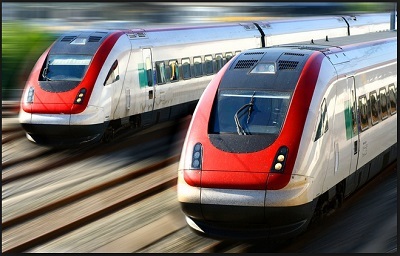Train race!
 Two trains, one
feet long, the other
feet long, on parallel tracks, can pass each other completely in
seconds when moving in opposite directions. When moving in the same direction, the faster train completely passes the slower one in
seconds. Find the speed of the slower train in feet per second.
Two trains, one
feet long, the other
feet long, on parallel tracks, can pass each other completely in
seconds when moving in opposite directions. When moving in the same direction, the faster train completely passes the slower one in
seconds. Find the speed of the slower train in feet per second.
The answer is 25.
This section requires Javascript.
You are seeing this because something didn't load right. We suggest you, (a) try
refreshing the page, (b) enabling javascript if it is disabled on your browser and,
finally, (c)
loading the
non-javascript version of this page
. We're sorry about the hassle.
Let f (feet per second) represent the speed of the faster train and s (feet per second), the speed of the slower train. The relative speed when the trains are going in opposite directions is f + s , and relative speed, when they are going in the same direction is f − s . In either case, the distance traveled is 3 5 0 + 4 5 0 = 8 0 0 (feet).
Since (relative) r a t e × t i m e = d i s t a n c e , we have ( f + s ) ( 8 ) = 8 0 0 and ( f − s ) ( 1 6 ) = 8 0 0 . This pair of equations is easily solved, yielding the values f = 7 5 and s = 2 5 (feet per second).